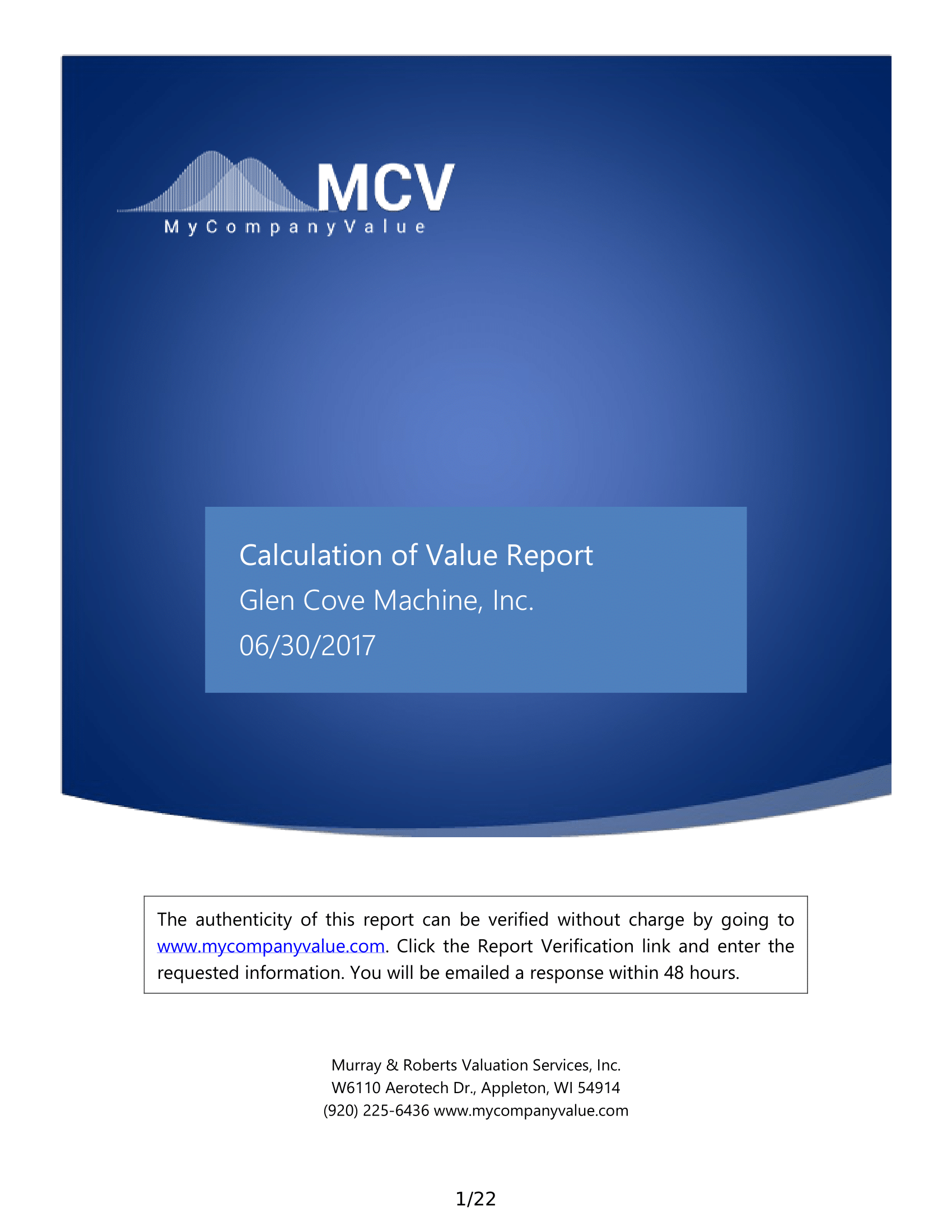An Analysis of Sales Forecasting Methods

Is There a Better Method of Forecasting Sales? (November 19, 2017)
In our relentless mission to offer the best business valuation possible, we paused to ask ourselves a critical question: “Can we identify a method of forecasting sales that is statistically more accurate than other methods?”
Most business valuation experts will tell you that no sales forecasting method is statistically more accurate than the others (in spite of the fact that we were unable to find any studies supporting that claim). They will tell you they use their judgement on a case by case basis, applying the method they think is most appropriate.
We gathered hundreds of data sets from a variety of small companies. Most of them had sales between one million and twenty million per year. We used the first five years of sales data (years one through five) to project the next five (years six through ten), and compared the projections to the actual data. We analyzed five methods of forecasting:
- Straight Average plus Growth,
- Weighted Average plus Growth,
- Previous Period plus Growth,
- Incremental Growth, and
- Least Squares.
Analysis
We calculated percentage variances for every year of every data set for every method, and averaged the results by year, and in total for each method. We also calculated standard deviations in the same manner to determine if some methods had higher degrees of variation. Both of these two factors are very important in evaluating the accuracy of a projection methodology. The results were both conclusive, and enlightening. The following is a discussion of the results obtained under each method tested.
Straight Average plus Growth
The first projection method tested was using a straight average (mean) of years one through five. One of the benefits of this approach is that it uses data from each year in the forecast. Year six is determined by applying one year of growth to the average.
The growth rate used is the cumulative annual growth rate, not the average annual growth rate. The cumulative growth rate was used in all methods that require a growth stated as a percentage. Unfortunately, this calculation of growth puts all emphasis on the change from year one to year five (without consideration of the fluctuations in between).
The annual variance percentage (‘variance’ henceforth) for the straight average plus growth method grew as the years progressed. The year one variance was near -2%. This reflects the fact that the small businesses in our data set had positive growth (on average), therefore the average of years one through five plus one year of growth was 2% lower than year six. The variances and standard deviations for each year and in total are shown in the table below.
| % | Year 6 | Year 7 | Year 8 | Year 9 | Year 10 | Total |
|---|---|---|---|---|---|---|
| Variance | -1.74 | 3.02 | 7.84 | 17.34 | 34.67 | 12.23 |
| Standard Deviation | 25.05 | 33.88 | 40.64 | 58.78 | 106.61 | 52.99 |
Weighted Average plus Growth
The second method applied a weighted average, where year one carried a weight of one, year two, two, etc. This approach considers all years, but heavily weights the most recent. Year six is determined by applying one year of growth to the weighted average. This results in a smaller variance in year six, as the table below demonstrates.
| % | Year 6 | Year 7 | Year 8 | Year 9 | Year 10 | Total |
|---|---|---|---|---|---|---|
| Variance | 0.11 | 4.82 | 9.75 | 19.73 | 38.11 | 14.50 |
| Standard Deviation | 24.22 | 32.79 | 40.29 | 60.12 | 115.30 | 54.54 |
Previous Period plus Growth
This method uses year five as the beginning point, adding one period of growth to determine year six. Given that year five is both the beginning estimate as well has a significant contributor to the growth rate, this method is almost totally reliant on the most recent year.
| % | Year 6 | Year 7 | Year 8 | Year 9 | Year 10 | Total |
|---|---|---|---|---|---|---|
| Variance | 4.54 | 9.37 | 13.90 | 25.72 | 46.11 | 19.93 |
| Standard Deviation | 31.03 | 36.62 | 41.96 | 68.99 | 133.48 | 62.41 |
Incremental Growth
The incremental growth method forecasts future growth as a straight line, as opposed to the curve produced by percentage growth. The method calculates the incremental growth from year one to year five (which relies on the fringes similar to cumulative growth) and dividing by four to arrive at the average annual incremental growth rate. Next, the average of years one through five is regarded as the median year (year three), and year six is determined by adding three years of incremental growth.
| % | Year 6 | Year 7 | Year 8 | Year 9 | Year 10 | Total |
|---|---|---|---|---|---|---|
| Variance | 4.66 | 5.70 | 4.12 | 7.39 | 16.57 | 7.69 |
| Standard Deviation | 52.46 | 67.11 | 83.11 | 109.33 | 138.53 | 90.11 |
Least Squares
The least squares method effectively calculates a straight line of best fit through the sales data for years one through five. This line has the lowest total variance through all points. Years six through ten are simply a continuation of the same line. The benefit of this approach is that each year’s data are equally weighed in both the determination of the starting estimate and growth rate.
| % | Year 6 | Year 7 | Year 8 | Year 9 | Year 10 | Total |
|---|---|---|---|---|---|---|
| Variance | 0.35 | 0.37 | -0.04 | 1.59 | 6.74 | 1.80 |
| Standard Deviation | 26.20 | 32.89 | 41.67 | 53.03 | 72.92 | 45.34 |
Conclusions
The following table lists each method in order of smallest to largest total variance. In year six, the variances correlate the least with the total variance, however in each subsequent year the correlation comes closer and the differences more distinct.
| Variances | Year 6 | Year 7 | Year 8 | Year 9 | Year 10 | Total |
|---|---|---|---|---|---|---|
| Least Squares | 0.35 | 0.37 | -0.04 | 1.59 | 6.74 | 1.80 |
| Incremental Growth | 4.66 | 5.70 | 4.12 | 7.39 | 16.57 | 7.69 |
| Average + Growth | -1.74 | 3.02 | 7.84 | 17.34 | 34.67 | 12.23 |
| Weighted Avg. + Gr. | 0.11 | 4.82 | 9.75 | 19.73 | 38.11 | 14.50 |
| Prev. Period + Gr. | 4.54 | 9.37 | 13.90 | 25.75 | 46.11 | 19.93 |
The table below lists each method in order of smallest to largest total standard deviation. The ordering is the same as the variance list, with the inexplicable exception of the incremental growth method which dropped from second to last.
| Standard Deviations | Year 6 | Year 7 | Year 8 | Year 9 | Year 10 | Total |
|---|---|---|---|---|---|---|
| Least Squares | 26.20 | 32.89 | 41.67 | 53.03 | 72.92 | 45.34 |
| Average + Growth | 25.05 | 33.88 | 40.64 | 58.78 | 106.61 | 52.99 |
| Weighted Avg. + Gr. | 24.22 | 32.79 | 40.29 | 60.12 | 115.30 | 54.54 |
| Prev. Period + Gr. | 31.03 | 36.62 | 41.96 | 68.99 | 133.48 | 62.41 |
| Incremental Growth | 52.46 | 67.11 | 83.11 | 109.33 | 138.53 | 90.11 |
The most prominent observation is that the methods which rely on percentage growth had significantly higher variances than the linear growth methods. This implies that small companies tend to grow incrementally, not exponentially. This may be a reflection of small companies reliance on key personnel rather than systems. The fact that all five methods had positive average variances, and that these variances tended to increase as the years progressed is an indicator that, over ten-year periods, the growth rates observed by small businesses tend to degrade.
It is also apparent that the accuracy of a method increases as reliance is dispersed across all data equally. Variances increase uniformly as the methods rely on fewer pieces of data. Most important, there is clearly a better method. The least squares method has significantly smaller variances and standard deviations than all other methods.
We also compared the results of the least squares projections to the expected growth offered by company management where available. The growth projections offered by company management had variances similar to the worst method listed above (Prior Period plus Growth).
If you would like to experiment with the model we have developed, click this sales forecasting tool link.
Brian Murray CPA/ABV, CVA specializes in business valuation, merger and acquisition consulting, and has served as an expert witness in court.

BRIAN MURRAY CPA/ABV CVA
Company founder Brian Murray CPA/ABV, CVA (Accredited in Business Valuation, Certified Valuation Analyst) has been in public accounting since 1997. Prior to that he was in finance at Kimberly-Clark Corp., audit at M&I Bank Corp., and accounting manager at Browning-Ferris Ind. Brian's areas of specialty are estate and trust tax and business valuation.Brian's community involvement includes: serving as Treasurer of the Salvation Army Fox Cities, serving on the Board of Directors of the Fox Valley Humane Society, serving on the Board of Directors of Big Brothers/Big Sisters, serving on the Board of Directors of the Wildwood Film Festival, and serving on the Board of Directors of Mothers and Unborn Baby Care. Brian also volunteered as a Big Brother for four years, and for United Way's fundraising campaign for multiple years. Brian and his family live in Neenah, WI.
Brian has been consulting clients regarding business value and merger & acquisition transactions since 2000. The majority of the valuation reports written were to aid a buyer or seller in a transaction or negotiation. Brian has often served as lead negotiator for prospective buyers or sellers.
Brian has served as an expert witness in corporate litigation cases as well as divorce, and has performed valuations for estate and gift tax returns, and estate planning.
